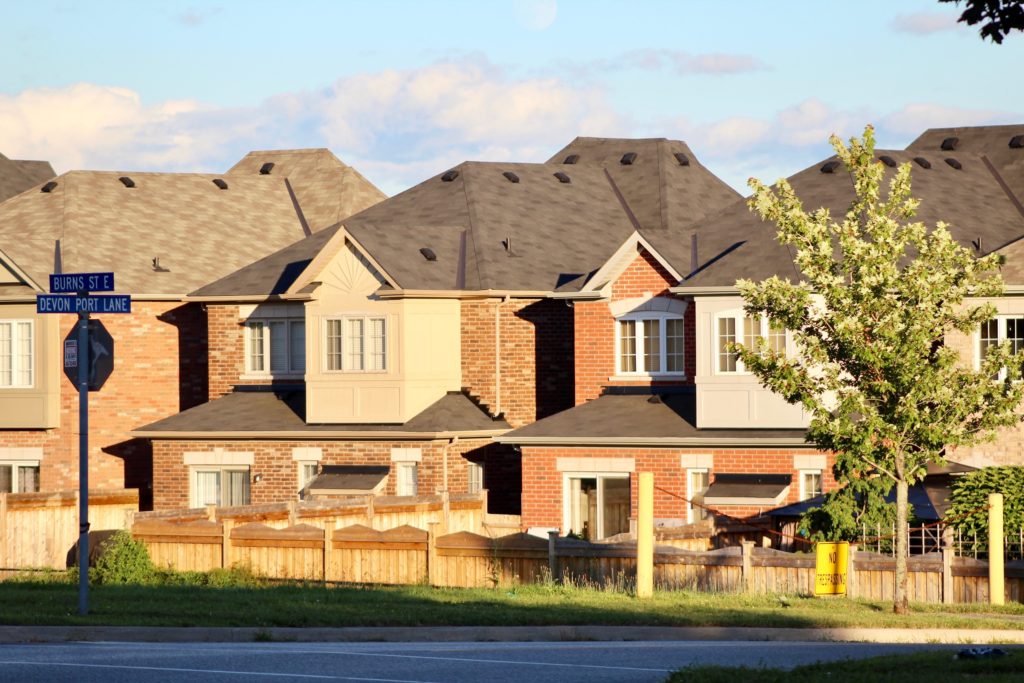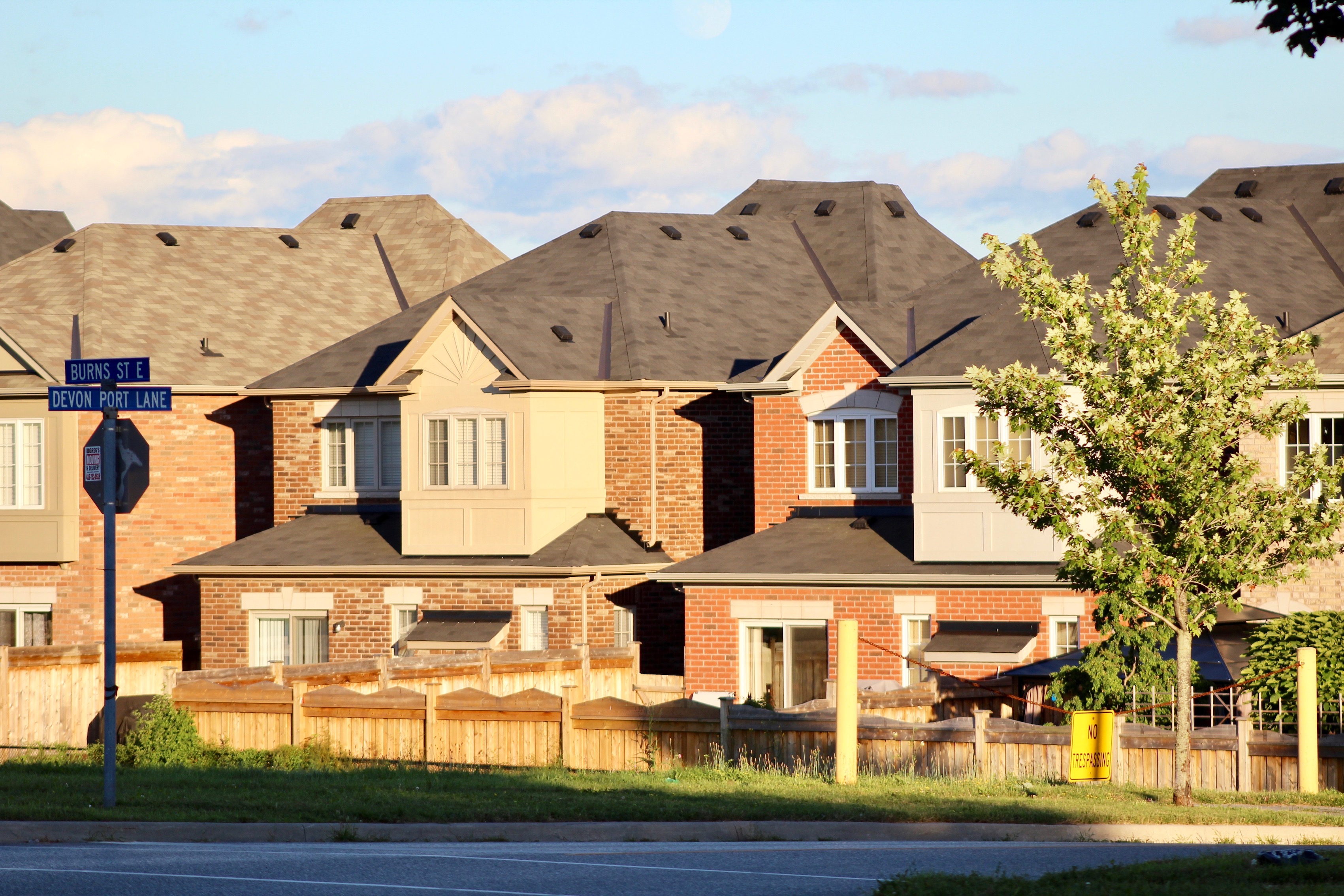By Yaldaz Sadakova

I was the only person waiting at the bus stop. Cars and trucks whizzed by in a violent sea of metal.
The surrounding landscape was barren and forbidding—just rows of nondescript houses, each like the previous one. Trees were few and far between. No human beings walked by.
I felt like I’d landed on another planet.
Half an hour later, there was still no sign of the bus.
I almost cried from frustration. How could you have a transit service that is so unreliable? I thought. Because everybody here, except for me, has a car; that’s how. If you don’t have a car here, you’re a nobody.
I had to go to downtown Toronto to meet a friend, and I was going to be late. Even a simple outing required more planning than an international trip.
At the time—after a lifetime of living in cities in different countries—I was living in the Toronto suburb of Whitby partly because I couldn’t afford to live in the city.
I hate Whitby, I thought. This country is one big fucking suburb.
It’s kind of true. Canada has three major cities where you can live without a car—Toronto, Montreal and Vancouver.
The rest of the country is made up of sprawling suburbs which require a car to get around. Even Canada’s smaller so-called cities are for the most part spread-out, car-dependent places.
Many people here see nothing wrong with that picture. They find it hard to imagine that a small town or suburb can be every bit as walkable and compact as a large city.
They find it hard to imagine that you can use your legs and transit to get around and lead a productive life.
But coming from Europe, where towns and cities are designed for people rather than cars, I find the car dependence of Canadian (and U.S.) suburbs disturbing.
I grew up in a torpid Bulgarian town with just 30,000 people. But because that town, Sevlievo, is laid out like a city, it feels distinctly urban.
You don’t need a car to get around. The streets are walking-friendly and full of pedestrians.
The houses and apartments are built densely; there’s no sprawl.
Shops are always at your doorstep, regardless of where you live. Sidewalk cafes are common.
That was also my experience when I lived in Belgium. Suburbs and towns outside of Brussels were walkable, dense, filled with pedestrians, served by transit. They felt urban.
When I first moved to Whitby three years ago, I couldn’t believe its population was four times larger than the population of Sevlievo—the place I’d always considered a backwater and couldn’t wait to get out of.
Whitby looked so deserted and devoid of street life that I originally assumed it must be smaller than Sevlievo.
How can a place be considered big if there are no people on the street, if there is no sign of human life?
Hermetically Sealed Life
The only thing you can encounter on a Canadian (and U.S.) suburban street is the occasional strip mall.
And, of course, bland cookie-cutter houses with manicured lawns.
Lawn landscaping is suburbia’s only attempt at esthetics. That and Christmas lights.
There are few proper sidewalks and few quality public spaces. There are no trees, except for the smaller streets.
Pedestrians are rare, so when you do walk, you feel like a freak.
It’s a dead landscape, a concrete desert.
Because of this dead landscape, in the suburbs you lead a hermetically sealed life.
Here’s what the hermetically sealed suburban life looks like.
Regardless of the season, your home is air-conditioned, and you are indoors watching TV.
The TV is the soul of the suburbs. Suburbanites get most of their ideas and intellectual nourishment from TV (or Netflix).
Brainwashed by commercials and TV shows, suburbanites then go to Costco and Home Depot. There, they buy Jacuzzis, state-of-the-art appliances and large packs of Elizabeth Arden anti-aging face cream so they can lead celebrity lives. As seen on TV.
Occasionally, when they can resist the pull of the screen and realize how absurd it is to sit inside on a gorgeous day, suburbanites hang out in their backyards, which are outfitted with luxury gazebos and outdoor furniture.
Suburban backyards have all sorts of other impressive amenities: swing sets, slides, trampolines, pools.
The goal of the hermetically sealed life is to install all the amenities you and your kids need in the comfort of your house.
That way, your house is your world. You have no incentive to go out and expose yourself to outside influences.
And when you do go out, you’re in your car, which perpetuates the hermetically sealed life.
Your days consist of moving from your air-conditioned/heated car to your air-conditioned/heated office or home.
No need to deal with your environment. You just drive through it.
Cars, together with detached houses and strip malls, form The Suburban Holy Trinity.
Within The Suburban Holy Trinity, the car enjoys the highest status. Because in the suburbs the car is an extension of your body.
Sometimes I see car-dependent suburbia as a dystopia come true: people’s legs have atrophied from lack of use and they’ve been replaced by cars.
The ironic twist is that people have voluntarily given up the use of their legs.
How the Suburbs Came to Be
I find car-dependent suburbia so alienating and grotesque, the logic behind it so impossible to understand, that when I was living there, I began to wonder how this monstrosity was created in the first place.
I also wondered if the forces that spawned Canadian and U.S. suburbs are the same.
So I started searching for answers. I learned that behind this evil phenomenon is a complex money-driven system.
Twentieth-century legislation favoring suburban development was a major factor in both countries, historical geographer Richard Harris notes in Creeping Conformity: How Canada Became Suburban, 1900-1960.
Zoning regulations requiring the separation of residential and commercial areas were another factor in both countries.
That’s why neighborhoods which feature both commercial and residential buildings are rare in the suburbs.
The construction of highways at the expense of transit was also key.
This, of course, has been manna for auto makers, another big reason why sprawling suburbs exist.
In the U.S., car companies have even tried to obstruct public transit.
Land developers and the manufacturers of all sorts of goods have also played a role in the creation of sprawling suburbs.
“Suburbs did not simply express debt-encumbered consumerism, they mandated it,” Harris writes.
And let’s not forget the banks. Harris points out that they’ve played their part by allowing small down payments and mortgage plans spanning long periods.
Incompatible With the Future
Urban studies expert Richard Florida says sprawling suburbs are incompatible with the future because they’re a remnant of the Industrial Age, when it was all about producing more gadgets for as little as possible at the expense of the environment.
“Suburban sprawl was the key engine of the now-fading era of cheap economic growth,” he writes in The New Urban Crisis: How Our Cities Are Increasing Inequality, Deepening Segregation, and Failing the Middle Class—and What We Can Do About It.
Today, Florida notes, sprawl hurts not only the environment but also the economy—because economic growth now comes from the clustering of talented people and companies, not from dispersal.
“Too much of our […] productive capacity and wealth is being squandered on building and maintaining suburban homes with three-car garages, and on the roads and sprawl that supports them, rather than being invested in the knowledge, technology, and density that are required for sustainable, high-quality growth. The suburbs aren’t going away, but they are no longer […] the engine of economic growth.”
To align the suburbs with the future, Florida says we need to make them more urban: denser, greener, more mixed-use and better connected to urban centers through transit.
In other words, we need to bust the hermetically sealed suburban model and get suburbanites to use their fucking legs. ♦
ALSO READ:

